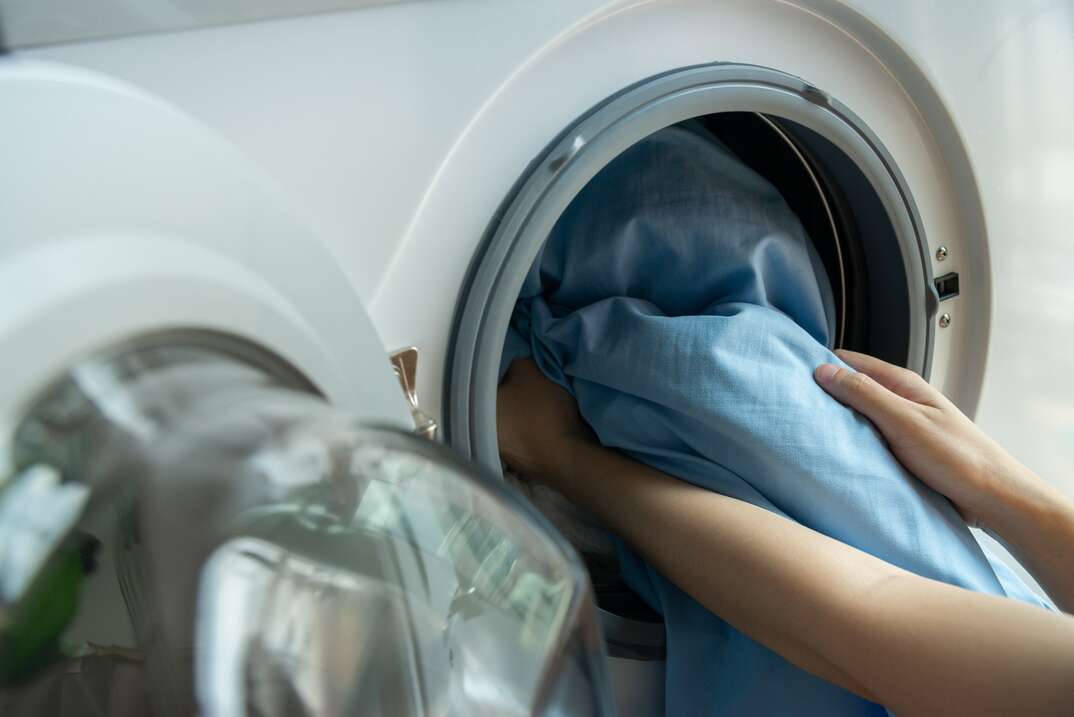Introduction
Keeping your washing machine mold-free is crucial to ensure clean and fresh laundry while preventing unpleasant odors and potential health issues. Regular maintenance and preventive measures are essential in minimizing the likelihood of mold growth. In this guide, we will provide you with specific tips and strategies to help you keep your washing machine mold-free. By implementing these practices, you can maintain a hygienic and efficient laundry environment.

How do I keep my washing machine mold free?
I. Proper Cleaning Routine
-
Regular Cleaning:
- Establish a routine for cleaning your washing machine to prevent the buildup of mold-causing residue. Aim to clean it at least once a month, but depending on usage and water quality, you may need to clean more frequently.
-
Exterior Cleaning:
- Wipe down the exterior surfaces of the washing machine regularly using a soft cloth or sponge. This removes dust, dirt, and moisture that can contribute to mold growth.
-
Internal Cleaning:
- Clean the drum, detergent compartment, rubber gaskets, and other internal components of the washing machine to eliminate residual detergent, lint, and moisture that can foster mold growth.
- Use a mild solution of bleach or distilled vinegar to clean the surfaces effectively. Follow manufacturer guidelines for recommended cleaning agents and procedures.

II. Proper Drying Techniques
-
Leave the Door Open:
- After each wash, leave the washing machine door open for a few hours or until it is completely dry. Allowing air to circulate inside the machine helps to prevent the accumulation of moisture, minimizing conditions favorable for mold growth.
-
Clean and Dry Seals:
- Inspect the rubber seals, gaskets, and other areas prone to trapping moisture. Wipe them down regularly and ensure they are completely dry after each use. Pay close attention to any hard-to-reach areas where moisture can collect.
-
Dry the Dispenser Drawer:
- Remove and dry the detergent dispenser drawer after each wash. This prevents leftover detergent and water from accumulating and promoting mold growth.
III. Maintenance and Preventive Measures
-
Monitor Water Quality:
- The quality of the water you use can influence mold growth. If you have hard water, consider using water softeners or descaling products recommended by the manufacturer to prevent mineral deposits that can contribute to mold.
-
Check Hoses and Drains:
- Regularly inspect hoses and drains connected to your washing machine for any signs of blockage or leakage. Ensure proper functioning and address any issues promptly to prevent stagnant water and mold growth.
-
Use the Recommended Detergent:
- Follow the manufacturer’s guidelines and use the recommended detergent for your specific washing machine. Using the correct detergent helps maintain the machine’s performance, prevents residue buildup, and minimizes the potential for mold growth.
-
Avoid Overloading:
- Overloading the washing machine can prevent proper water circulation and impede the machine’s ability to remove detergent and residue effectively. Avoid overloading to ensure thorough cleaning and prevent the accumulation of moisture.
-
Run Self-Clean Cycles:
- Some modern washing machines have self-clean cycles that help in removing any buildup or residue that can lead to mold growth. Run these cycles periodically, following the manufacturer’s instructions, to keep the machine clean and mold-free.

IV. Prevention in High-Humidity Areas
-
Ventilation in the Laundry Room:
- Ensure proper ventilation in the laundry room by opening windows or using exhaust fans during and after each laundry cycle. Adequate airflow reduces humidity levels and prevents moisture buildup.
-
Dehumidifier:
- If your laundry room tends to be consistently humid, consider using a dehumidifier to reduce moisture levels. This can help create an inhospitable environment for mold growth.
V. Responding to Mold Growth
-
Promptly Address Mold:
- If you notice signs of mold growth, such as black spots or a musty odor, take immediate action to address the issue. Thoroughly clean the affected areas using an appropriate cleaning agent, such as bleach or vinegar, following the recommended safety guidelines.
-
Remove and Clean Moldy Items:
- Remove any clothing or fabrics that have come into contact with mold and clean them separately following the manufacturer’s instructions. Avoid transferring mold spores to unaffected areas.
-
Consult a Professional, if Necessary:
- If you are dealing with persistent mold growth or significant damage, it may be advisable to seek professional assistance. Mold remediation specialists can assess the situation and provide guidance on proper cleaning or repairs.
VI. Safety Precautions
-
Use Protective Gear:
- When cleaning your washing machine, wear gloves and protective eyewear to prevent direct contact with cleaning agents and potential irritants. Follow safety guidelines provided by the manufacturer and use ventilation to minimize exposure to cleaning fumes.
-
Read Manufacturer’s Instructions:
- Familiarize yourself with the specific cleaning and maintenance instructions provided by the washing machine manufacturer. Following these recommendations ensures the most effective and safe cleaning methods for your particular model.

VIII. Additional Tips and Solutions
-
Use Mold-Resistant Products:
- Consider using mold-resistant products, such as detergent or laundry additives, designed to prevent mold growth. These products can help inhibit the growth of mold and reduce the likelihood of it spreading to your washing machine.
-
Regular Deep Cleaning:
- In addition to routine cleaning, schedule deeper cleaning sessions for your washing machine. This can involve running an empty cycle with hot water and a cleaning agent specifically formulated for deodorizing and sanitizing washing machines. Follow the manufacturer’s instructions and guidelines for best results.
-
Inspect and Clean the Filter:
- Some washing machines have filters that collect lint, debris, and other particles. Regularly inspect and clean these filters according to the manufacturer’s instructions. Clogged filters can trap moisture and contribute to the growth of mold.
-
Avoid Leaving Wet Clothes in the Machine:
- Remove wet clothes promptly after each wash cycle and avoid leaving them sitting in the machine for an extended period. Wet clothing can contribute to moisture buildup and create an environment conducive to mold growth.
-
Consider Sun-Drying:
- Whenever possible, take advantage of sunny weather and air dry your laundry outdoors. Sunlight has natural disinfectant properties and can help kill mold and bacteria on fabrics. However, be cautious with sensitive fabrics or those prone to fading in direct sunlight.

VII. Conclusion
Maintaining a mold-free washing machine requires regular cleaning, proper drying techniques, and preventive measures. Establishing a consistent cleaning routine, ensuring proper drying of the machine’s components, and implementing maintenance strategies will go a long way in preventing the growth of mold.
By staying vigilant, monitoring the water quality, and implementing adequate ventilation in the laundry room, you can create an environment that discourages mold growth. Promptly addressing any signs of mold and taking appropriate cleaning action will help you maintain a clean, fresh, and mold-free washing machine, promoting both effective laundry care and a healthy home environment.

